Topic: Inflatable Pool Maintenance 101: Tips for Keeping Your Pool in Top Shape
Are you a proud owner of an inflatable pool? Looking for ways to keep it in tip-top shape? Well, you’re in luck because I’ve got some fantastic tips and tricks for you! In this article, we’ll discuss the essential maintenance practices that will help prolong the lifespan of your inflatable pool and ensure it stays clean and safe for endless hours of poolside fun.
Maintaining an inflatable pool doesn’t have to be a daunting task. By following a few simple steps, you can keep your pool in mint condition for years to come. We’ll cover everything from cleaning and disinfecting to proper storage and maintenance during the off-season. So, get ready to dive into a world of knowledge and learn how to take care of your beloved inflatable pool like a pro!
But wait, there’s more! In addition to maintenance tips, we’ll also delve into other exciting topics such as safety guidelines, product reviews for top-notch inflatable pools, and even some fun activities that you can enjoy with your family and friends. With our comprehensive content, you’ll have all the information you need to make the most out of your inflatable pool experience. So, sit back, relax, and get ready to become a true inflatable pool aficionado!
Types of Inflatable Pools
Kids’ inflatable pools
Kids’ inflatable pools are small-sized pools designed specifically for young children. They are usually shallow and have a low water capacity, making them safe and suitable for toddlers and young kids to enjoy water play. These pools often feature fun and colorful designs, such as cartoon characters or animal prints, to appeal to children. They are an excellent way to introduce young kids to water and can be set up easily in the backyard or on a deck.
Family-sized inflatable pools
Family-sized inflatable pools are larger in size and can accommodate multiple people, making them a great option for families or gatherings with friends. These pools offer more space for swimming and playing, and some models even come with additional features like built-in seats or cup holders. They are typically deeper than kids’ pools, allowing adults and older children to enjoy a refreshing swim. Family-sized inflatable pools are often made from durable materials to withstand frequent use and can provide hours of entertainment during hot summer days.
Inflatable pools for adults
Inflatable pools for adults are designed specifically for grown-ups who want to have a relaxing and enjoyable experience in the water. These pools are typically larger and deeper than both kids’ and family-sized pools, allowing for a more comfortable swimming experience. They are often equipped with additional features like massage jets or built-in benches for ultimate relaxation. Inflatable pools for adults can be a great alternative to traditional in-ground or above-ground pools, providing a convenient and cost-effective solution for those who want to have their own private oasis at home.
Benefits of Inflatable Pools
Easy setup and storage
One of the greatest benefits of inflatable pools is their ease of setup and storage. Unlike traditional pools that require extensive construction or installation, inflatable pools can be set up and inflated within minutes. They come with clear instructions and usually include an air pump for quick inflation. When not in use, inflatable pools can be easily deflated, folded, and stored in a compact space, making them ideal for people with limited backyard or storage space.
Affordability compared to traditional pools
Another advantage of inflatable pools is their affordability. Inflatable pools are significantly more budget-friendly compared to traditional pools, which require substantial investment in construction, materials, and maintenance. Inflatable pools provide a cost-effective alternative for those who want to enjoy the benefits of having their own pool without breaking the bank. They offer a great value for the price, allowing individuals and families to have fun and cool off during hot summer days without having to spend a fortune.
Portability and versatility
Inflatable pools are designed to be portable and versatile. They can be easily moved and relocated, allowing you to set up your pool in different locations depending on your preference or the weather conditions. Inflatable pools can be used in various settings, such as in the backyard, on the deck, or even indoors with proper ventilation and space. Their portability and versatility make inflatable pools a flexible option that can be enjoyed by individuals or families in different environments.
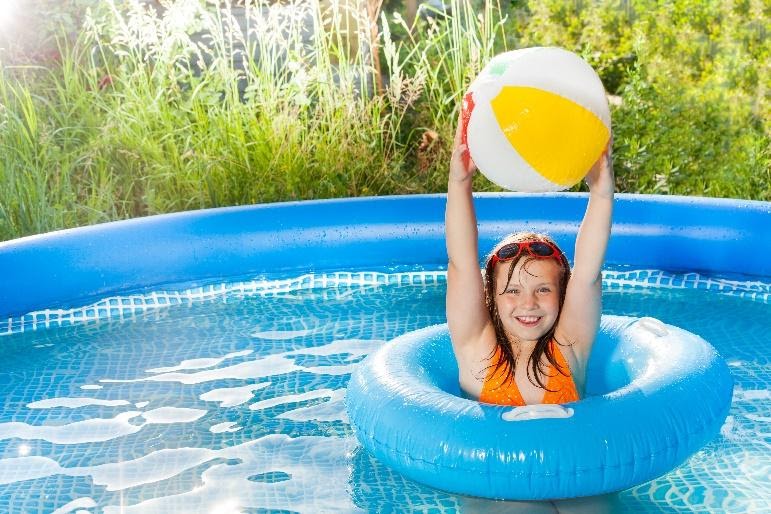
Setting Up Your Inflatable Pool
Choosing the right location
The first step in setting up your inflatable pool is choosing the right location. Look for a flat and level surface, preferably on grass or soft ground to provide a cushioning effect. Avoid setting up your pool on concrete or rocky surfaces, as they can increase the risk of punctures or tears. Make sure the location is away from any sharp objects or overhanging branches that could potentially damage the pool. Additionally, consider factors such as access to sunlight and proximity to a water source, as these can affect the overall enjoyment and maintenance of your pool.
Preparing the ground
Before inflating your pool, it is important to prepare the ground properly. Clear the area of any debris, rocks, or sharp objects that could potentially puncture the pool. You may want to use a tarp or groundsheet as an additional protective layer between the ground and the pool. This will help prevent any damage to the bottom of the pool and provide extra stability. Ensure that the ground is level by using a leveling tool or simply eyeballing it. A level surface will prevent the water from pooling to one side and maintain the structural integrity of the pool.
Inflating and filling the pool
Once the ground is prepared, it’s time to inflate your pool. Most inflatable pools come with an air pump or can be inflated using a standard household air pump. Follow the manufacturer’s instructions for proper inflation, making sure not to overinflate the pool as it can put stress on the seams. Once the pool is fully inflated, fill it with water using a garden hose or buckets. Monitor the water level as you fill it, ensuring that it does not exceed the recommended capacity indicated by the manufacturer. Once filled, check for any leaks or bulges in the pool and adjust the water level accordingly.
Maintaining Water Quality
Balancing the pH levels
Maintaining proper water chemistry is crucial for keeping your inflatable pool clean and safe to swim in. The pH level of the water should be between 7.2 and 7.6, which is slightly alkaline. You can easily test the pH level of your pool water using a test strip or a digital test kit. If the pH level is too high or too low, you can use pH increasers or pH decreasers to adjust it accordingly. Proper pH balance ensures that the water is comfortable to swim in and helps prevent issues like skin or eye irritation.
Regular water testing
In addition to pH levels, it is important to regularly test other water parameters such as chlorine levels and alkalinity. Chlorine is a common sanitizer used in pools to kill bacteria and algae. The ideal chlorine level should be between 1 and 3 parts per million (ppm). Alkalinity helps stabilize the pH levels and should be maintained between 80 and 120 ppm. Regularly testing these parameters using test strips or a test kit will help you identify any imbalances and take corrective actions to maintain water quality.
Adding chlorine or other sanitizers
To ensure that your inflatable pool water is free from harmful bacteria and algae, it is important to add appropriate sanitizers regularly. Chlorine is the most common sanitizer used in pools and can be added in various forms, including chlorine tablets, granules, or liquid. Follow the manufacturer’s instructions for the recommended dosage and application method. It is important not to over-chlorinate your pool, as it can cause skin and eye irritation. Additionally, consider using alternative sanitizers like bromine or mineral systems, which can provide effective sanitization with fewer harsh chemicals.
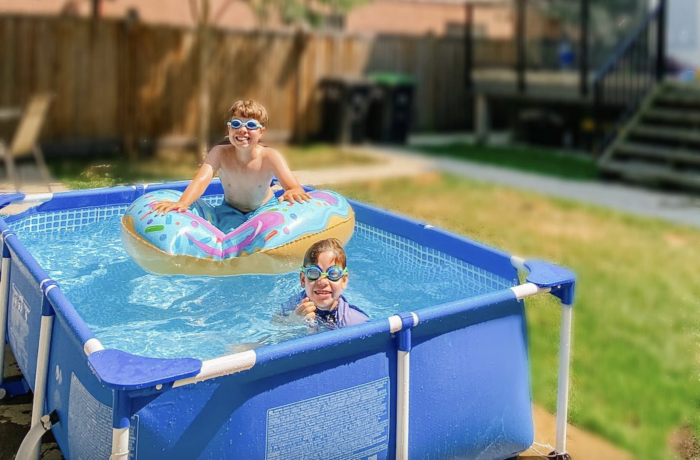
Cleaning and Maintenance
Skimming and removing debris
Regular skimming and debris removal is essential for keeping your inflatable pool clean and clear of any leaves, bugs, or other debris. Use a pool skimmer net or a pool vacuum with a debris collection bag to skim the surface and remove any floating or submerged particles. This will not only keep your pool visually appealing but also prevent clogs in the filtration system and reduce the risk of algae growth. Aim to skim the pool at least once a day or more frequently if needed, especially during periods of heavy debris accumulation.
Brushing the pool walls
Brushing the walls of your inflatable pool is important for preventing the buildup of dirt, algae, and other contaminants. Use a pool brush with soft bristles to gently scrub the walls, steps, and corners of your pool. This will help remove any stubborn stains or algae spots and improve water circulation. Aim to brush the pool walls at least once a week or more frequently if you notice any buildup. Regular brushing will not only keep your pool clean but also prolong the lifespan of the pool material.
Vacuuming or using a pool cleaner
In addition to skimming and brushing, regular vacuuming or using a pool cleaner can help maintain the cleanliness of your inflatable pool. There are various types of pool cleaners available, including manual, automatic, and robotic cleaners. Manual pool vacuums require you to physically vacuum the surface and bottom of the pool, while automatic or robotic cleaners do the job for you. Choose the type of cleaner that suits your needs and budget, and follow the manufacturer’s instructions for proper usage. Regular vacuuming will remove any dirt or debris that has settled on the pool floor, ensuring clean and clear water for swimming.
Preventing Algae Growth
Using algaecides
Algae growth is a common issue in pools, including inflatable pools. To prevent algae from blooming in your pool, consider using algaecides. Algaecides are chemical treatments that help inhibit the growth and spread of algae. They are available in liquid or granular form and can be added directly to the pool water. Follow the manufacturer’s instructions for the recommended dosage and application method. Algaecides are typically added on a regular basis, especially during periods of high heat or heavy rainfall when algae growth is more likely to occur.
Maintaining proper filtration
Proper filtration is crucial for preventing algae growth in your inflatable pool. The filtration system helps remove impurities, dirt, and debris from the water, reducing the nutrients available for algae to thrive. Make sure to run your pool’s filtration system for the recommended duration based on the size and capacity of your pool. It is generally recommended to run the filtration system for at least 8 hours a day or more if needed. Clean or backwash the filter regularly to maintain optimal performance and ensure that it effectively removes contaminants from the water.
Limiting sunlight exposure
Algae thrive in sunlight, so limiting sunlight exposure can help prevent their growth in your inflatable pool. Whenever possible, position your pool in a shaded area or use a pool umbrella or shade sail to provide additional protection from direct sunlight. This will not only help reduce the risk of algae growth but also keep the pool water cooler and more refreshing. If moving your pool to a shaded area is not feasible, consider using a pool cover during periods of non-use, especially overnight or when the pool is not in direct use.
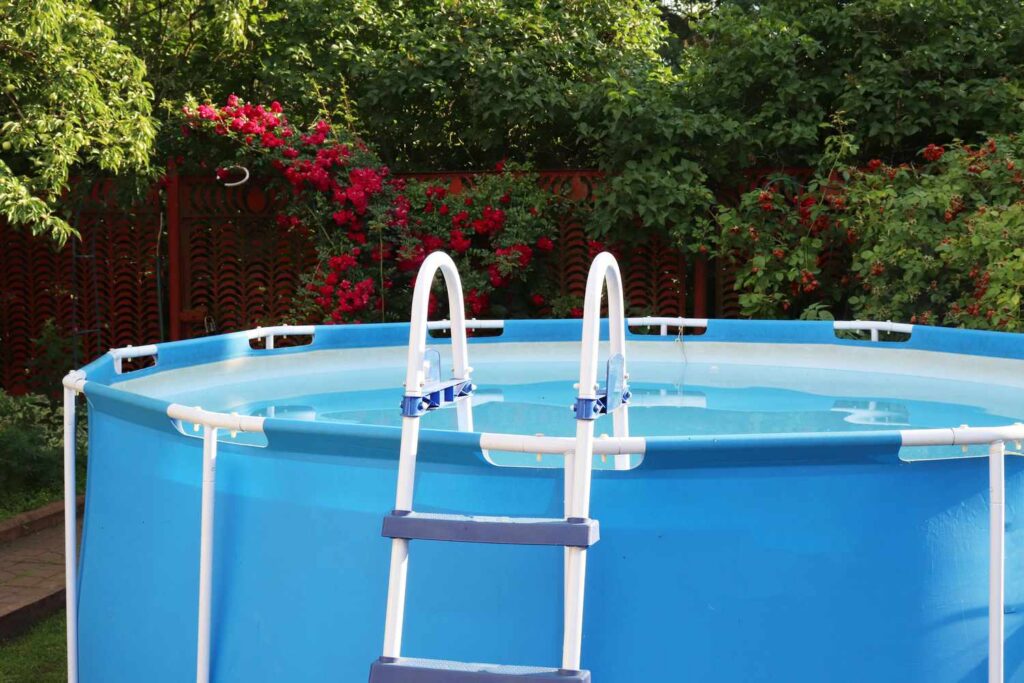
Dealing with Pool Leaks
Locating and patching leaks
Pool leaks can be a common issue in inflatable pools, but they can be easily fixed with the right approach. The first step in dealing with a pool leak is to locate its source. Inflate your pool fully and visually inspect the seams, valves, and connection points for any signs of air leakage. You can also use a mixture of dish soap and water and apply it to the suspected areas. If you see bubbles forming, it is an indication of a leak. Once you have identified the leak, use a patch kit specifically designed for inflatable pools to cover the affected area. Follow the patch kit instructions for proper application and use sufficient pressure to ensure a firm seal.
Using leak detection kits
If you are having trouble locating a leak in your inflatable pool, you can use a leak detection kit to pinpoint its exact location. Leak detection kits usually consist of a dye or fluorescent liquid that is added to the pool water. The dye will flow out of the leak and create a visible stain or mark, making it easier to locate the source of the leak. Follow the instructions provided with the leak detection kit for the proper application and wait for the dye to reveal the leak. Once located, use a patch kit or other suitable repair method to fix the leak and ensure that your pool remains properly inflated.
Replacing damaged parts
In some cases, a pool leak may be caused by damaged or worn-out parts that cannot be fixed or patched. If you have thoroughly inspected your inflatable pool and determined that the leak is beyond repair, you may need to consider replacing the damaged parts. Contact the manufacturer or check for replacement parts online to find the suitable replacement for your specific pool model. It is important to ensure that the replacement parts are compatible and properly install them based on the manufacturer’s instructions. Proper maintenance and care can help prolong the lifespan of your inflatable pool and minimize the risk of leaks or damages.
Winterizing Your Inflatable Pool
Draining and storing the pool
Winterizing your inflatable pool is important to protect it from freezing temperatures and potential damage. Before winter arrives, drain the pool completely by using a submersible pump or siphoning the water out with a garden hose. Make sure to remove any remaining water by tilting the pool and allowing it to air dry. Once dry, thoroughly clean the pool using mild soap and water to remove any dirt or residue. Once cleaned, deflate the pool completely and fold it neatly. Store the pool in a cool and dry location, such as a garage or shed, away from direct sunlight and extreme temperatures.
Protecting the pool from freezing
In areas where freezing temperatures are common, it is important to protect your inflatable pool from damage caused by freezing water. Freezing water can expand and potentially cause the pool material to crack or tear. To prevent this, consider using an inflatable pool cover or a pool winterizing kit specifically designed for inflatable pools. These covers or kits provide an additional layer of insulation and protection, helping to keep the pool material intact during freezing temperatures. Follow the manufacturer’s instructions for proper installation of the cover or winterizing kit.
Covering and securing the pool
Covering and securing your inflatable pool during winter can further protect it from debris, snow, and other external elements. Use a weather-resistant pool cover that fits securely over the pool and provides adequate protection. Make sure to clean the pool cover before installation to prevent any debris or dirt from transferring into the pool. Secure the cover tightly using the provided straps or fasteners to prevent it from being blown away by strong winds. Additionally, regularly inspect the pool cover during winter and remove any accumulated snow or debris to maintain its effectiveness.
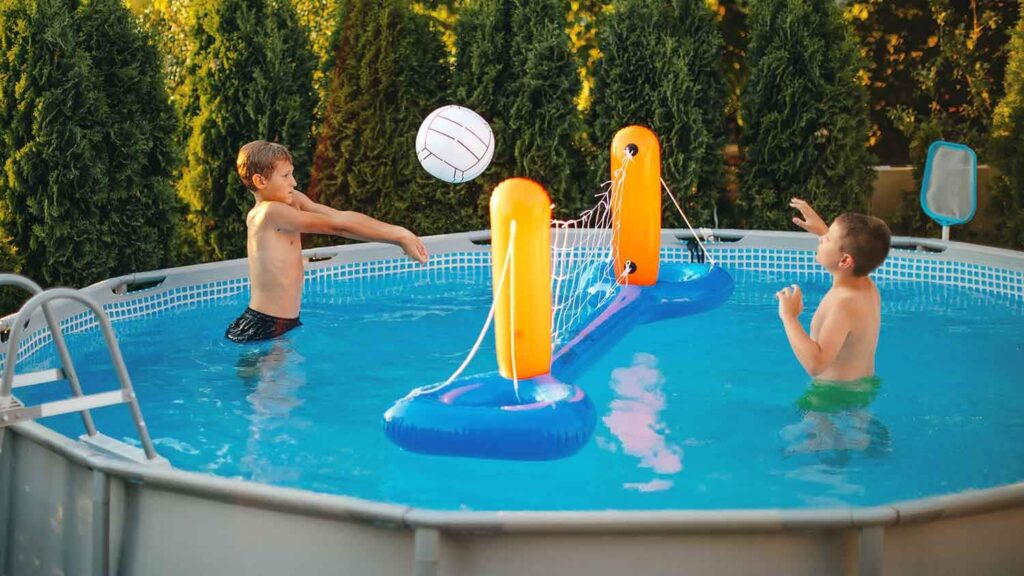
Safety Measures for Inflatable Pools
Supervising children at all times
When using an inflatable pool, it is essential to supervise children at all times, regardless of their swimming abilities. Drowning can occur in just a few seconds and can happen even in shallow water. Always designate a responsible adult who can actively watch the children while they are in or around the pool. Avoid distractions like using electronic devices or engaging in other activities that could divert attention away from the pool. Constant supervision is the key to ensuring the safety of children and preventing accidents or injuries.
Installing pool barriers or fences
To enhance the safety of your inflatable pool, consider installing pool barriers or fences. These physical barriers can help restrict access to the pool area and prevent unsupervised entry, particularly for young children. Pool barriers or fences should be at least 4 feet high and have self-closing and self-latching gates that are beyond the reach of children. Regularly inspect these barriers or fences to ensure they are in proper working condition and do not have any gaps or openings that could allow children to access the pool area unsupervised.
Using safety equipment like life jackets
When using an inflatable pool, especially for young children or non-swimmers, it is important to use appropriate safety equipment such as life jackets or floatation devices. Life jackets provide an extra layer of safety and buoyancy, giving children or weaker swimmers the confidence and support they need in the water. Make sure to choose life jackets that are properly fitted and approved by relevant safety standards. In addition, never rely solely on safety equipment as a substitute for active supervision. Always ensure that children wearing life jackets are closely supervised to prevent any accidents or mishaps.
Common Inflatable Pool Problems
Inflation issues
Inflation issues are a common problem with inflatable pools. Sometimes, it can be difficult to achieve uniform inflation or maintain proper air pressure in the pool. This can be due to various factors such as leaks, improperly sealed valves, or inadequate air pressure. To address inflation issues, make sure to carefully inspect the pool for any leaks or damaged areas and use a patch kit to repair them. Ensure that all valves and seams are properly sealed and tightened. If the problem persists, consider using an electric air pump or consult the manufacturer for further assistance.
Tears and punctures
Tears and punctures can occur in inflatable pools due to sharp objects or rough handling. These damages can compromise the structural integrity of the pool and cause air leakage or deflation. To repair tears or punctures, locate the damaged area and clean it thoroughly using mild soap and water. Once dry, apply a suitable adhesive or patch from a repair kit specifically designed for inflatable pools. Press the patch firmly onto the damaged area and allow it to cure as per the manufacturer’s instructions. Regularly inspect your pool for any signs of tears or punctures and address them promptly to avoid further damage.
Equipment malfunctions
Equipment malfunctions can occur in inflatable pools, particularly with filtration systems or accessories such as pumps or hoses. If you experience any issues with your pool equipment, start by troubleshooting the problem. Check for any loose connections or clogs in the system. Clean or replace any faulty or worn-out parts as needed. If the problem persists, consult the manufacturer or a pool professional for further assistance. Regular maintenance and proper care of your pool equipment can help prevent malfunctions and prolong their lifespan.
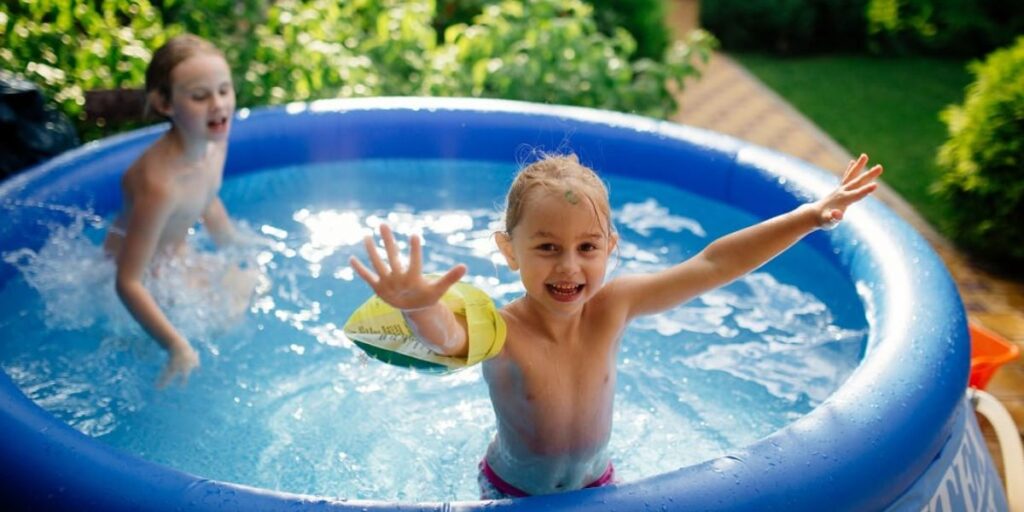
Repairing Minor Pool Damage
Using patch kits
Patch kits are a handy tool for repairing minor damages in your inflatable pool. These kits typically include adhesives, patches, and instructions for proper usage. Start by thoroughly cleaning the damaged area with mild soap and water and allowing it to dry completely. Apply the adhesive onto the patch and press it firmly onto the damaged area, ensuring that there are no air bubbles trapped underneath. Allow the adhesive to cure as per the manufacturer’s instructions before inflating the pool. Patch kits are an effective and cost-saving solution for addressing minor damages and extending the life of your pool.
Fixing leaks with adhesive
Adhesive can also be used to fix minor leaks in your inflatable pool. Start by locating the leak and cleaning the area with mild soap and water. Once dry, apply a thin layer of adhesive onto the leak and spread it evenly using a small brush or applicator. Allow the adhesive to dry completely before inflating the pool. Make sure to follow the adhesive manufacturer’s instructions for proper application and curing time. Adhesive repairs are a quick and convenient solution for small leaks or punctures and can help prevent air loss and deflation.
Repairing small tears
Small tears in your inflatable pool can often be repaired using a combination of adhesive and patching materials. Start by cleaning the damaged area with mild soap and water, making sure to remove any loose debris or particles. Apply a thin layer of adhesive onto the tear and spread it evenly using a small brush or applicator. Cut a patch from a suitable repair material, ensuring that it covers the entire tear with some extra space around it. Press the patch firmly onto the adhesive and smooth out any air bubbles or wrinkles. Allow the adhesive to cure as per the manufacturer’s instructions before inflating the pool.
Adding Fun Accessories to Your Inflatable Pool
Inflatable pool toys and games
Inflatable pool toys and games can add an extra element of fun and entertainment to your inflatable pool experience. There are a wide variety of inflatable toys and games available, including floaties, water rings, dive sticks, and water slides. These accessories can provide endless enjoyment for adults and children alike, encouraging physical activity and imaginative play. When selecting inflatable pool toys and games, consider the age appropriateness, safety features, and overall durability to ensure a safe and enjoyable experience for everyone using the pool.
Floating loungers and chairs
Floating loungers and chairs can be a great addition to your inflatable pool, providing a comfortable and relaxing spot to unwind and soak up the sun. These inflatable loungers and chairs are designed to float on the water’s surface, providing support and comfort while you relax. Look for models that are made from durable materials and have features like cup holders or built-in shades for added convenience. Floating loungers and chairs can transform your inflatable pool into a mini oasis and make your lounging experience even more enjoyable.
Water slides and sprayers
For those looking for an adrenaline rush and a fun-filled experience, inflatable water slides and sprayers can be a fantastic addition to your inflatable pool. Water slides attach to the side of the pool and provide a thrilling ride into the water. Sprayers can be attached to the top of the slide or installed separately, creating a refreshing water spray as you slide down. These accessories can provide hours of entertainment for kids and adults, making your inflatable pool the ultimate destination for summer fun.
Alternative Uses for Inflatable Pools
Outdoor showers or foot baths
Inflatable pools can be repurposed as outdoor showers or foot baths, providing a convenient and portable solution for rinsing off chlorine, sand, or dirt after swimming. Simply place the inflated pool in a suitable location, connect a garden hose to the pool’s drain valve, and adjust the water flow. This alternative use is particularly useful for those living in apartments or houses without access to an outdoor shower or hose. Outdoor showers or foot baths can also be a great addition to camping trips or beach outings, allowing you to clean up before entering your vehicle or living space.
Fish or pet bathing stations
Inflatable pools can also serve as fish or pet bathing stations, providing a controlled and contained environment for washing your pets or cleaning fish. The shallow and portable nature of inflatable pools makes them ideal for tasks that require easy access and minimal mess. Fill the pool with water, add pet-friendly shampoo or fish cleaning solution, and gently clean your pets or fish as needed. Make sure to rinse the pool thoroughly after each use to remove any residue. This alternative use can be a practical and convenient option for pet owners or avid fishermen.
Container gardening
An inflatable pool can be repurposed as a container garden, allowing you to grow plants or vegetables in a portable and compact space. The deep and wide nature of inflatable pools provides ample room for planting a variety of crops or flowers. To convert your pool into a container garden, place a layer of gravel or pebbles at the bottom for drainage, add a suitable planting medium, and transplant your desired plants or seeds. Ensure proper watering and sunlight exposure based on the specific needs of your plants. Container gardening can be a fun and creative way to make use of your inflatable pool during the off-season or when it is not being actively used for swimming.
Conclusion
Inflatable pools offer a convenient, affordable, and enjoyable way to beat the heat and create lasting memories with family and friends. Proper maintenance and care are essential for keeping your inflatable pool in top shape and ensuring a safe and pleasant swimming experience. From setting up your pool to maintaining water quality, cleaning and maintenance, preventing algae growth, dealing with pool leaks, winterizing, and implementing safety measures, these tips will help you keep your inflatable pool in optimal condition. Whether you own a kids’ inflatable pool, a family-sized pool, or an inflatable pool for adults, following these maintenance practices will help you enjoy crystal-clear water, maximum durability, and endless fun all summer long. So grab your sunscreen, inflate that pool, and dive in with confidence knowing that you have the knowledge and tips to keep your pool in top shape.